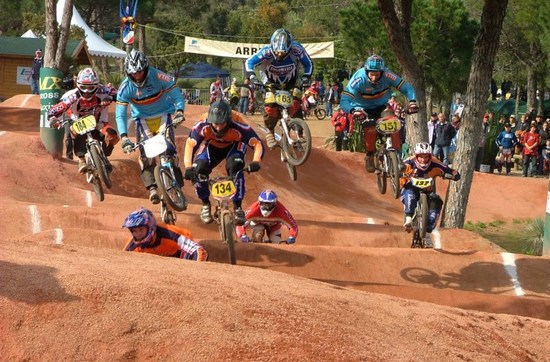Is It Wrong to Let Children Do Extreme Sports?

Tags: USA
Is It Wrong to Let Children Do Extreme Sports? published by Evanvinh
Writer Rating: 5.0000
Posted on 2016-03-15
Writer Description: Evanvinh
This writer has written 733 articles.
Just off Spyglass Drive in Tehachapi, Calif., a small city about a hundred miles north of Los Angeles, a hulking steel lattice rises in the middle of a dusty landscape. The girders hold up one end of a suspended wooden road that swoops up the hillside underneath it like a smooth, caramel-colored roller coaster. The other end lies some 500 feet away, its top nine stories above its lowest dip.
One afternoon in April 2012, several boys and a man climbed into a camouflage-patterned dune buggy and drove uphill to the ramp’s apex. There, the boys strapped on helmets and dressed themselves in kneepads, chest and spine protectors, hip pads, elbow pads and gloves. The oldest, a 13-year-old named Jett Eaton, dropped his skateboard and stepped on its tail, popping its front wheels into the air. He tipped his board over the platform’s edge, then dropped into his run. Halfway down the length of the ramp, he reached a jump and soared over a 70-foot gap. On the other side, he resumed his descent toward the far end of the ramp, which curved up suddenly and launched him 40 feet above the ground, spinning furiously, before he crashed back down onto the ramp.
He was trying to complete a difficult trick known as the “nine” — attempting, in the three seconds he was airborne, to spin 900 degrees, or two and a half times, like a figure skater performing a double axel, while holding onto his board with both hands. Jett had been trying and failing to do the trick for months.
After three hours — and Jett’s 13 unsuccessful attempts at the nine — Geoff Eaton said they were done. He was coaching them, and he didn’t want anyone skating while tired. He had driven his two oldest sons, Jett and Jagger, who was 11, seven hours from Mesa, Ariz., that day to skate here, on one of only two permanent MegaRamps in existence.
Extreme Yearbook
To accompany Jon Lackman’s piece on children in extreme sports, we selected 10 young, and exceptionally accomplished, athletes, interviewing them about their perceptions of fear, greatest accomplishments and brushes with danger within their sports. In order to give these kids “pro” treatment, we chose the British sports photographer Levon Biss.
The kids gathered at the bottom, tossing a football, sharing snacks and laughs. Jett, however, unbeknownst to the others, sneaked back up the MegaRamp to try the nine one more time. As he approached the jump over the gap, he wobbled, then slammed into the ramp. Everyone turned. “Call the copter!” Geoff yelled.
Even as childhood in America seems to become more and more circumscribed in the name of safety — as schools limit recess activities and remove threatening playground equipment, as critics inveigh against parents who let their children roam without supervision — kids participate in extreme sports at ever-younger ages. What were once simple pastimes, like riding bicycles and skateboards, have evolved into thrill-seeking pursuits and intense competitions whose goals include new tricks and surpassing what’s thought to be possible. Jett Eaton was first invited to compete on the Mega-Ramp in the Big Air event at ESPN’s X Games when he was 13; two of the top six finishers that year were under 16. In January, a snowboarder named Chloe Kim became the Winter X Games’ youngest gold medalist, at 14. In July, Minna Stess, then 8, became the youngest girl to skate from the steepest section of the MegaRamp. The Icelandic snowboarder Benni Fridbjornsson, now 10, landed a flip when he was 7.
After his crash on the MegaRamp, Jett Eaton was airlifted to the Level 1 trauma center in Fresno, 130 miles away. “I thought I lost him,” Geoff Eaton told me recently. Jett suffered a fractured skull, bruised frontal lobes, a seizure and a concussion. When he left the hospital three days later, it was not clear if he would ever skate the MegaRamp again.
As a young child, Jett wanted to do motocross. His father discouraged that and steered him toward skateboarding, which Jett took up at 7. As his skating improved, Geoff built an increasingly elaborate skating facility near their home in Arizona and staffed it with elite coaches. Jett placed fourth in a major competition when he was 13, the age at which he was first invited to the X Games.
When I sat down with him, he had just finished a three-hour skating session. His T-shirt, from DC Shoes, one of his sponsors, was drenched in sweat. His left forearm was encased in a black cast for a broken wrist. I asked him why he kept at it, despite all the injuries. Jett says he has had about 10 concussions and five seizures, has broken six bones and has had his spleen punctured twice.
“I got my first skateboard for Christmas when I was 7, and my dad built me a small ramp in my garage, and ever since I’ve loved it,” he said. “I couldn’t stop getting on my skateboard.” On good days, skateboarding is pure happiness. “And even when I’m feeling down or not skating too well, if I start skating with my friends, I can get pumped up that way.” At the end of his workout, I saw Jett finally land a trick he struggled with for weeks, the “backside 180 nose grind” — in which the front truck of a skateboard slides along a curb — and his whole body went slack with satisfaction. His friends rushed up, and everyone exchanged fist bumps.
I asked Jett, who has returned to skateboarding’s second-largest ramp, the “mini mega,” if he will go back to the MegaRamp too. “Most likely I’ll get back on it,” Jett said.
His father is O.K. with that. “That’s his choice, if he wants to do it again,” Geoff says. “I’ll never tell him no.” He sees how hard Jett skates: five hours a day, five days a week. Some people might regard his parenting as crazy — even criminal. But where others may see only the injuries, Geoff believes he has helped his sons, now 16 and 14, find passion, identity, tight-knit peer groups. He says they eat right, sleep well and disdain alcohol and drugs. They apply the grit they’ve acquired through skating to their schoolwork.
“If you’re going to live, you can’t live behind a stop sign, taking no risk, and every time you want to do something that gets your heart beating, you decide that it’s safer if you don’t,” he says. “That’s not how I live. I don’t want my kids living like that.”
Sources: http://www.nytimes.com/2015/05/17/magazine/is-it-wrong-to-let-children-do-extreme-sports.html?_r=0
You have the right to stay anonymous in your comments, share at your own discretion.


